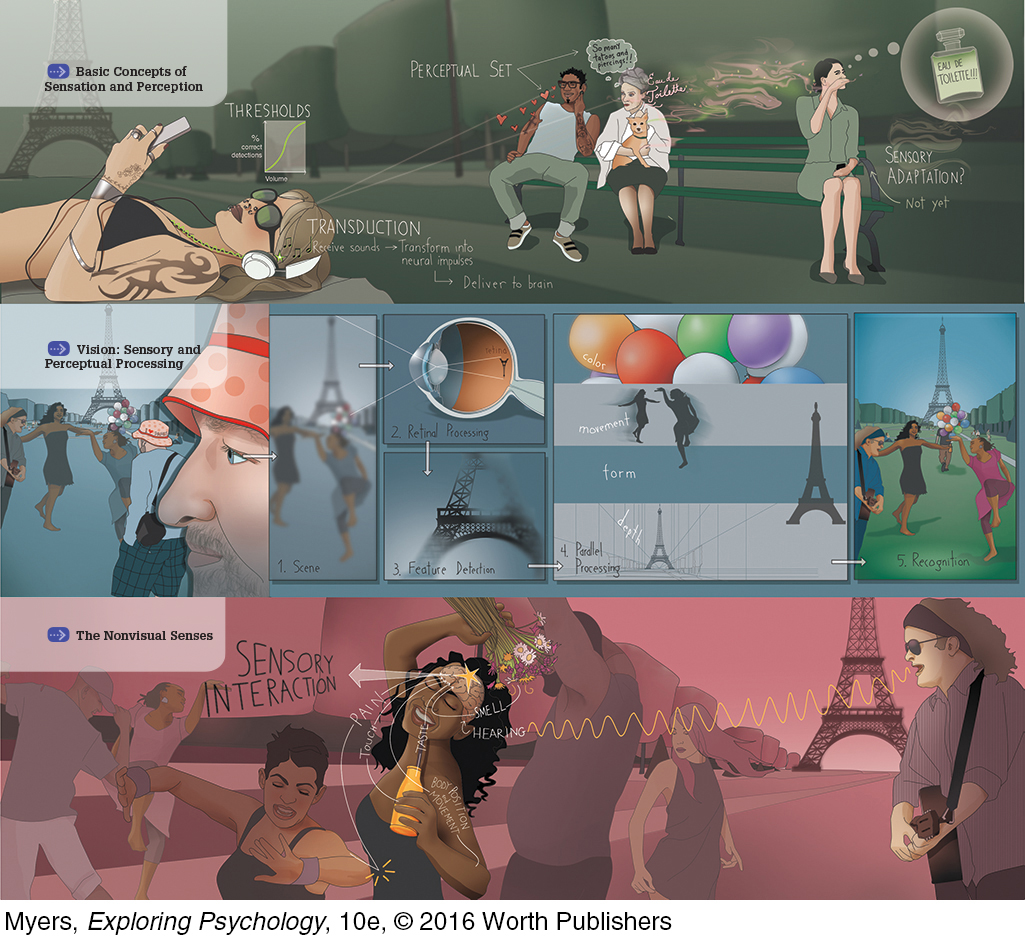Processing Sensation and Perception
198

Sensation and Perception

Basic Concepts of Sensation and Perception
Vision: Sensory and Perceptual Processing
The Nonvisual Senses
199
I have perfect vision,” explains writer-
In college, on a date at the Spaghetti Station, I returned from the bathroom and plunked myself down in the wrong booth, facing the wrong man. I remained unaware he was not my date even as my date (a stranger to me) accosted Wrong Booth Guy, and then stormed out of the Station… . I do not recognize myself in photos or videos. I can’t recognize my stepsons in the soccer pick-
To avoid being perceived as snobby or aloof, Sellers sometimes fakes recognition. She often smiles at people she passes, in case she knows them. Or she pretends to know the person with whom she is talking. (Similarly, those of us with hearing loss may fake hearing or shy away from busy social situations.) But, Sellers points out, there is an upside: When encountering someone who previously irritated her, she typically feels no ill will, because she doesn’t recognize the person.
Unlike Sellers, most of us have a functioning area on the underside of our brain’s right hemisphere that helps us recognize a familiar human face as soon as we detect it—
Frogs, which feed on flying insects, have cells in their eyes that fire only in response to small, dark, moving objects. A frog could starve to death knee-
deep in motionless flies. But let one zoom by and the frog’s “bug detector” cells snap awake. (As Kermit the Frog said, “Time’s fun when you’re having flies.”) Male silkworm moths’ odor receptors can detect one-
billionth of an ounce of sex attractant released by a female one mile away (Sagan, 1977). That is why there continue to be silkworms. Human ears are most sensitive to sound frequencies that include human voices, especially a baby’s cry.
In this chapter, we’ll look more closely at what psychologists have learned about how we sense and perceive our world. We begin with some basic principles that apply to all our senses. 